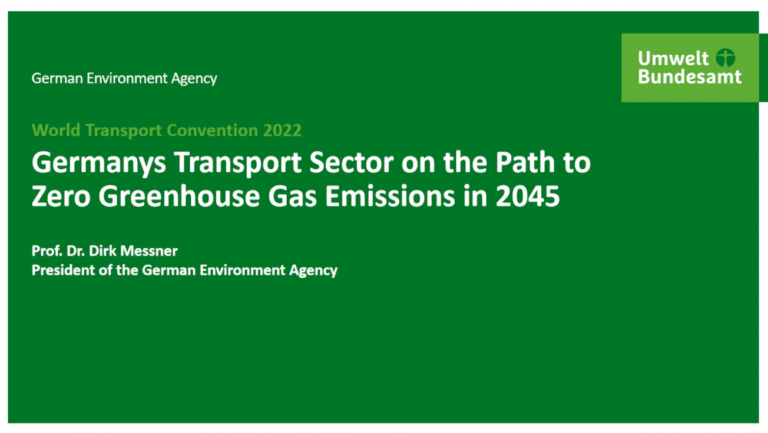Author: Sebastian Ibold
Power-to-X (PtX) also Power-to-Anything) is the general term for processes that convert electrical power into fuels (Power-to-Gas, Power-to-Liquid), raw materials for industry (Power-to-Chem) or other energy forms. To make PtX products, pure hydrogen is first obtained from the source products – power and water – by electrolysis. As the first PtX product, hydrogen is the basis for all other products. By adding CO2 or other carbon compounds, it is possible to produce further synthetic energy sources and chemical base materials such as methanol and kerosene. This process is only carbon neutral if the electricity is generated from renewable energy sources and the CO2 is removed from the atmosphere (Direct Air Capture) or if it is based on non-food crops. If this is the case, the PtX products are considered ‘green’.
Key Findings

Background
China, with a total of 10.5 Gt of CO2 in 2018, is the world’s biggest emitter of greenhouse gases (GHG)[1]. In its Nationally Determined Contributions (NDCs)[2], China in 2015 pledged to achieve the peaking of CO2 emission around 2030 and making best efforts to peak early. China further has nationally determined to lower CO2 emissions per unit of GDP by 60% to 65% from the 2005 level and to increase he share of non-fossil fuels in primary energy consumption to around 20%. In particular, the transport sector is contributing to emission growth. The emissions of the transport sector, accounted for about 11% of China’s total GHG emissions in 2018[3] and are not likely to peak before 2040[4], mainly due to significantly increasing volumes of both passenger and freight transport.

China is the world’s largest producer and consumer of hydrogen and plays an important role with regard to the global dynamics of hydrogen industry and market uptake as well as technological development. Hydrogen and RE-based synthetic fuels can play a key role in the transformation of China’s energy sector and the decarbonization of China’s transport sector. The adoption of hydrogen fuel cells and RE-based synthetic fuels offers chances to significantly mitigate CO2 emissions, in particular in areas where direct electrification is not feasible in the foreseeable future such as aviation and maritime transport. The potential role of hydrogen for China´s future transport sector development was highlighted in an interview with China´s former science and technology minister Mr. Wan Gang in June 2019. Wan stated that “China should look into establishing a hydrogen society” and “should move further towards fuel cells” and that “We (China) will sort out the factors that have been hindering the development of fuel-cell vehicles (FCVs)”.[5] Even though Mr. Wan did not further outline a potential application strategy and did not refer to the future sources of hydrogen production, it can be assumed that hydrogen and fuel cell technology will play an important role for the future propulsion technology and fuel roadmap in China’s transport sector, not only road transport but aviation and maritime transport. The statement of Mr. Wan is also important given the fact that it was him who made a similar call two decades ago on vehicle electrification.[6] Even though hydrogen fuel cell application struggled to gain traction worldwide, a bigger push of hydrogen by the Chinese central government, similar as it pushed battery-electric mobility, could potentially lead to global hydrogen technology and market breakthrough. This makes cooperation with China crucial for the establishment of a global hydrogen society. The important role of hydrogen was also underlined by Libin Huang, a spokesperson for the Ministry of Industry and Information Technology (MIIT). Mr. Huang stated that “hydrogen FCVs and pure electric vehicles with lithium batteries are important technical routes for new energy vehicles,” and that “We (the Chinese government) believe that hydrogen FCVs and pure electric vehicles will coexist and complement each other for a long time to meet the needs of transportation”[7]. FCVs will not replace battery electric vehicles, but instead will complement them according to the specific use and vehicle type.
Key drivers of hydrogen industry and market uptake in China
The future increase of hydrogen demand and the creation of a (global) hydrogen market could lead to the reduction of current economic and technological barriers and thus unlock the potentials of hydrogen and RE-bases synthetic fuels as important complements to the decarbonization roadmap for the transport sector. The development and uptake of the green hydrogen[8] industry and market in China is driven by various factors of which the following are most important:
- Energy security and diversification of the energy system;
- Energy storage with long-term storability, in particular to mitigate wind power curtailment;
- Mitigation of air pollution and climate change;
- Technology and market development;
- Reduction of raw material import dependency (e. g. cobalt, lithium or nickel)
Energy security and diversification of the energy system
Energy security is challenged by increasing energy demand and geopolitical dynamics. Today, China has the biggest energy demand ahead of the United States and the European Union. Energy security concerns lead to strong aspirations and efforts towards the diversification of China’s energy system. During the last decades, China has massively invested in the installation of RE capacity and has become the world leader in terms of wind and solar power capacity. Globally, China accounts for the highest share of total installed RE capacity and RE electricity generation. In 2019, China had a renewable power generation output of 732.3 terrawatt-hours (TWh)[9], accounting for approx. 26% of the world’s total (2,805.5 TWh)[10]. At the end of 2018, China announced its first “subsidy-free” RE projects, with the costs of RE electricity generation having fallen below local coal power costs. More zero-subsidy wind and solar projects are planned in the coming years.
With a total output of 22 million tons per year (a third of the global hydrogen production), since 2010, China is the world’s largest producer of hydrogen[11] and is expected to become the world’s largest hydrogen market by 2030. Hydrogen energy will supply 10% of the domestic energy demand accounting for 60 million tons by 2050. With China’s large potentials for the production of green hydrogen and RE electricity costs are expected to further decrease over the coming years, resource-rich (wind, hydro- and solar energy) areas in China might be able to competitively produce green hydrogen on a large scale in the mid to long-term.
Energy storage with long-term storability
The production of green hydrogen from RE-based PEM electrolysis offers potentials to realize RE integration – in particular due to high RE curtailment rates. In 2016, on average 17% of wind power in China was curtailed, while in some regions the curtailment rate reached 38%. The average rate for solar curtailment in 2016 was 19.7%, with peaks of 32%. Even though curtailment rates decreased in the last years and are expected to further decrease in the future, the geographical mismatch between power generation areas in the north-west and load consumption centers in the eastern coastal provinces of China remains, posing challenges to the country’s power system.[12] According to the 13th Renewable Energy Development Five Year Plan (2016-2020), which was adapted by the National Energy Administration (NEA) under the National Development and Reform Commission (NDRC) on December 10, 2016, one of the key objectives is to resolve the renewable power curtailment problem. Due to its high energy density, long-term storability and ability to transfer electricity into other energy sectors, hydrogen will play an important role as an alternative energy storage medium, making the curtailment of RE an important driver for RE-based hydrogen and synthetic fuel production.
Mitigation of air pollution and climate change
Even though, ambitious measures to promote RE in China are being implemented and the share of RE electricity generation increased from 16% in 2011 to 26% in 2019, coal is still the dominant energy source, contributing about 64.7% to the country´s electricity generation. RE-based hydrogen will help meeting climate but also air pollution mitigation targets without increasing reliance on imported gas. Besides the direct use of hydrogen in fuel cells, the transformation into fuels can significantly contribute to the decarbonization of the aviation and maritime transport sector.
Technology and market development
According to the White Book on the China Hydrogen Energy and Fuel Cell Industry[13], which was released on June 25, 2019 by the China Hydrogen Alliance, the annual economic output of the hydrogen industry in China will grow from EUR 133 billion between 2020 to 2025 to more than EUR 1,330 billion by 2050. In particular, the development of the fuel cell industry is a key driver of the ambitions of the Chinese government to promote the hydrogen industry and market uptake and respective development of infrastructures, regulatory frameworks and fiscal and non-fiscal support measures. Aim is to increase the automotive industry’s competitiveness by becoming capable of the design and system integration of vehicles and by establishing an entire FCV technology and industry chain, including fuel cell stacks and key materials, fuel cell system and core components, FCVs and critical parts, and hydrogen supply infrastructure. China has also made efforts in developing solutions for the adoption of RE-based hydrogen in the aviation industry where several pilot projects have been initiated. In 2017, a fuel cell powered electric airplane has made its first trail flight as a joint project between the Dalian Institute of Chemical Physics of Chinese Academy of Sciences and the Liaoning General Aviation Academy.
Table 1 – Estimated industrial output of the hydrogen industry in China
| Period | 2020-2025 | 2026-2035 | By 2050 |
| Estimated industrial output of the hydrogen industry in China | EUR 133bn | EUR 665bn | EUR 1,330bn |
Current Challenges
Hydrogen can only contribute to the low carbon development of the transport sector and the energy system as a whole when produced from RE. Combined, globally about 96% of hydrogen is currently produced from fossil fuels[14], mainly due to significant lower production costs compared to the production of hydrogen by water electrolysis. Currently, the production of hydrogen in China, a total of 22 million tons per year, is based on coal (by coal gasification, 62%), Liquid Natural Gas LNG (by steam methane reforming SMR, 19%), RE-based water electrolysis (by Power-to-Gas PtG, 1%) and hydro-carbon & alcohols (18%). Hydrogen production by coal gasification in China is about three times cheaper than by water electrolysis.
Table 2 – Hydrogen production sources globally, in Germany and in China
| Region | Coal Gasification[15] | Steam Methane Reforming of LNG[16] | Hydro-carbons & alcohols | Water Electrolysis[17] |
| Globally[18] | 18% | 48% | 30% | 4% |
| Germany[19] | 15% | 33% | 45% | 7% |
| China[20] | 62% | 19% | 18% | 1% |
To untap the potentials of hydrogen as a low carbon fuel and a feedstock for the hydrogen-based production of synthetic fuels, the share of green hydrogen must be significantly increased. China’s hydrogen sector and its fuel cell industry is developing rapidly but the overall value chain is still weak due to both unfavorable regulations and technology gaps. The classification of hydrogen as a hazardous chemical and the prohibition of liquid hydrogen transport, which is limited to military purposes only, leads to scattered developments around local (fossil and bi-product) production locations and a lack of integration on provincial or national level. In addition, the lack of advanced domestic core technology further hinders the competitive development of the hydrogen industry and green hydrogen production capacities in particular. Advanced PEM electrolyzer technology which is crucial for efficient green hydrogen production but also domestic fuel cell stack technology are still behind foreign levels.
Currently the major challenges for the uptake of green hydrogen production in China can by summarized as follows[21]:
- High investment costs, e. g. generation, transport, storage and distribution infrastructure
- High costs of green hydrogen production compared to grey hydrogen production, e. g. the production costs of coal gasification based grey hydrogen (around EUR 1.65 per kg) are three times lower than green hydrogen production from RE based water electrolysis[22];
- Lack of existing infrastructure, e. g. gas pipeline infrastructure, storage and distribution infrastructure, pilot plants;
- Lack of domestic advanced technology and reliance on foreign suppliers, in particular domestic PEM electrolyzers, needed for green hydrogen production[23] (increasing the price of green hydrogen);
- Lack of regulations, codes, norms and standards, in particular with regards to the hydrogen on-site production and supply chain;
- Lack of an overall technology path and roadmap leading to policy uncertainty
Relevant Policies and Strategies
Already since the 10th Five-Year Plan (2001-2005), the development of hydrogen and FCV technology has been reflected in the political development blueprints of China. The Chinese national government supports the development of the hydrogen industry mainly by setting out industry development strategies and guiding policies[24] but also by providing subsidies e. g. for the purchase of FCVs. According to the 13th Renewable Energy Development Five-Year-Plan (2016-2020), which was adapted by the NEA on December 10, 2016, one of the key objectives is to resolve the renewable power curtailment issues. In the report on the work of the government, which was presented by Li Keqiang, Premier of the State Council during the Second Session of the 13th National People’s Congress of the People’s Republic of China in March 2019, it is stated that the Chinese government, to maintain stable automobile consumption, will continue preferential policies on the purchase of NEVs and facilitate the building of charging and hydrogenation facilities. Despite the importance it has been given, hydrogen application and adoption in the transport sector is mainly part of the overall development plan of the NEV industry in China. The Chinese government has currently no top-level hydrogen plan or strategy in place and specific strategies outlining the role of hydrogen and RE-based synthetic fuels for the transport sector and aviation and maritime transport in particular are not existing. Since March 2020, the China Energy Group (CEG) has been commissioned by the NEA to develop a study on “Development of the Hydrogen Industry and Innovative Technologies” with targets for 2025, 2035 and 2050 and promotion strategies for hydrogen production, storage, transport and consumption. The first draft is to be submitted to NEA by mid of 2020. In June 2020, NEA already issued a Working Guideline for the Energy Sector in 2020, however the yet to be issued development plan for the hydrogen industry is considered to be the national hydrogen strategy and is receiving great attention due to the current lack of economic viability, the lack of infrastructure including the gas grid, the lack of pressure and motivation for coal-exit as well as roadmap unclarity with regard to the specific roles of green, blue and grey hydrogen.[25]
The first draft is submitted to NEA by mid of 2020. I the lack of infrastructure including the gas grid, the lack of pressure and motivation for coal-exit as well as roadmap unclarity with regard to the specific roles of green, blue and grey hydrogen.
Based on the national policy frameworks, provincial and local governments are developing, often rather uncoordinated, their own strategies and plans for the development of hydrogen or fuel cell industries, R&D centers and implementation pilot projects[26]. So-called hydrogen valleys and clusters are established nation-wide to concentrate industrial activity where the capital cost of hydrogen infrastructure can be shared between market participants. Numerous provinces, regions, city clusters and cities have announced development plans and/or started the establishment of hydrogen clusters including Beijing, Chengdu, Datong, Foshan[27], Rugao, Shandong[28], Shanghai, Suzhou, Wuhan, the Yangtze River Delta and Zhangjiakou[29] among others. The resources including wind, solar and water needed for the production of green hydrogen are not distributed equally in China. While some provinces such as Sichuan, Yunnan, Xinjian or Inner Mongolia have abundant resources of hydro, wind or solar power, for many coal-dependent provinces such as Inner Mongolia (the province has both high wind and coal potentials), Shanxi or Shaanxi, grey hydrogen production with a local hydrogen production cost advantage is one key to enable the development of new hydrogen industries and value chains and to enable long-term socio-economic transition pathways diversifying their industry and production landscape and respective labour markets. Those regions need to receive specific incentives to focus as early as possible on the production of green hydrogen aligned with coal phase out strategies.

Fuel Cell Vehicles Roadmap
As described, the development of the FCV industry is an important key driver of the development of the hydrogen industry and market in China. On May 8, 2015, the Chinese Government published《中国制造2025》Made in China 2025, a 10-year plan by the Chinese Central Government to comprehensively upgrade China’s manufacturing industry. The plan highlights 10 priority sectors, including NEVs and related equipment. Based on the New-Energy Vehicles and Equipment Plan outlined in Made in China 2025, in October 2016, the Strategy Advisory Committee of the Technology Roadmap for Energy Saving and New Energy Vehicles and the Society of Automotive Engineers of China (SAE-China) jointly published the Energy Saving and New Energy Vehicle Technology Roadmap. Chapter 4 of this roadmap, the FCV Technology Roadmap, lays out the future FCV Technology development in China. The development of FCVs in China is not new and can be divided into 4 phases:
- Pre-2000 phase: FCV conception, demonstration and testing of “basic principles and validation”;
- 2000-2010 Phase: Extensive R&D FCV and technology validation and demonstration;
- 2010-2015 phase: Early commercial niche market introduction;
- Post-2015-phase: Early commercialization with first sales of passenger FCVs to private users in selected areas.
Chapter 4 of the above listed Energy Saving and New Energy Vehicle Technology Roadmap, the FCV Technology Roadmap, lays out the future FCV Technology development in China. The roadmap describes a three-step (2020, 2025, 2030) pathway, setting ambitious development targets. By 2030, China aims at achieving following goals:
- Achieve integrated hydrogen production, storage, delivery and large-scale applications;
- Focus on hydrogen on-site production at hydrogen refueling stations, and its standardization and commercialization;
- Increasing hydrogen production from decentralized renewable resources (50+ percent hydrogen production from renewable energy (RE) sources;
- Establish entire fuel cell manufacturing and supply chain encompassing FCV materials, components and systems;
- Five key performance indicators (auto power, economic, durability, environmental adaptability, and costs) meet commercial requirements;
- Scale up commercialization of private passenger cars and large commercial vehicles;
- Fulfill commercial requirements by technological improvement, increase of system efficiency and system optimization
According to the roadmap, China’s target for FCV development is to deploy one million FCVs including passenger cars and commercial vehicles by 2030 (by end of 2019, a total of about 6,000 FCVs are in operation in China with 2,833 FCVs produced in 2019[30]) and to have 1,000+ hydrogen refueling stations (HRS) in operation by the same year (end of 2019 close to 70 HRS were in operation). In comparison, Japan aims at having 0.8 million FCVs in service by 2030.[31] The promotion and development of FCVs aims not at replacing battery-electric or plug-in hybrid electric vehicles (e. g. of all new energy busses sold in China in 2018, 93% were battery-electric busses). Instead a collaborative development is envisaged. In particular, for the development of commercial FCVs, hybrid power system combination of fuel cell stacks and batteries is targeted.[32] Besides the development of FCVs, the roadmap outlines China’s future hydrogen infrastructure technology path. Hydrogen production should increasingly be based on RE sources (50+ percent hydrogen production from RE by 2030), focusing from 2025 on distributed RE-based hydrogen production.
Table 3 – China’s hydrogen fuel cell development goals[33]
| Year | Hydrogen Refueling Stations (HRS) | Fuel Cell Vehicles |
| 2020 | 100+ HRS | 5,000 FCVs in demonstration, among which 60% are FC commercial vehicles and 40% are FC passenger cars |
| 2025 | 300+ HRS | 50,000 FCVs in service, among which 10,000 units are FC commercial vehicles, and 40,000 units are fuel cell passenger cars |
| 2030 | 1,000+ HRS, and 50+ percent hydrogen production from renewable sources | 1 Million+ FCVs in operation |
International Cooperation
International cooperation is specifically mentioned in the Energy Saving and New Energy Vehicle Technology Roadmap as important for the future development of the hydrogen and fuel cell roadmap in China. In particular, joint R&D in the areas such as PEM fuel cells and electrolyzers and the formation of joint ventures with foreign enterprises is supposed to support to close the technology gap between domestic and international products and to foster the uptake of green hydrogen production in China. Cooperation between industry players is already happening and many international companies including Ballard Power, Siemens, Thyssen Krupp or Linde are aiming at strengthening and expanding their market positions in China. Siemens, in 2019, signed a MoU with China State Power Investment Corp. for the development and utilization of green hydrogen. Linde and Beijing Green Hydrogen Technology Development, in 2020, signed a MoU under which both companies will collaborate on a variety of green hydrogen initiatives, including hydrogen technology research and development, and the implementation of green hydrogen mobility solutions during China’s inaugural hosting of the 2022 Winter Olympics.
The window of opportunity for cooperation with China as the world’s biggest emitter of CO2 emissions and the biggest producer and consumer of hydrogen on green hydrogen and RE-based synthetic fuel production and adoption in the transport sector is open. In particular, for untapping the potentials of hydrogen and RE-based synthetic fuels for the zero-carbon development of the aviation and maritime transport sectors, cooperation with China is crucial. This is in particular a chance against the background and targets of the European Green Deal which was announced in 2019, the European and German hydrogen strategies which were published in 2020, the upcoming 14th Five-Year Plan for Socio-Economic Development of the People’s Republic of China (2021-2025), an awaited China hydrogen strategy and in general the currently high dynamics in the field of hydrogen and its potentials for decarbonization. In particular, joint dialogues and cooperation on respective policies, roadmaps and standards, the joint establishment of multi-stakeholder cooperation platforms and the joint conduction of replicable pilot projects can be seen as purpose- and fruitful mechanisms and tools to foster and leverage an aligned, synergetic and sustainable low carbon PtX pathway.
[1]China Academy of Transportation Sciences CATS
[2] https://www4.unfccc.int/sites/ndcstaging/PublishedDocuments/China%20First/China’s%20First%20NDC%20Submission.pdf
[3] China Academy of Transportation Sciences CATS
[4] World Energy Outlook 2017, IEA
[5] https://www.bloomberg.com/news/articles/2019-06-12/china-s-father-of-electric-cars-thinks-hydrogen-is-the-future
[6] https://www.cleantech.com/hydrogen-in-china/
[7] http://www.globaltimes.cn/content/1147265.shtml
[8] Green hydrogen is produced by electrolysis of water, whereby only electricity from renewable energy sources is used for the electrolysis. Regardless of the electrolysis technology chosen, hydrogen is produced CO2-free, since the electricity used is 100% from renewable sources and is therefore CO2-free
[9] Renewable power is based on gross generation from renewable sources including wind, geothermal, solar, biomass and waste, and not accounting for cross-border electricity supply
[10] https://www.bp.com/content/dam/bp/business-sites/en/global/corporate/pdfs/energy-economics/statistical-review/bp-stats-review-2020-full-report.pdf
[11] Hydrogen supply comes mainly from a high demand for chemical production and oil refining and use as a feedstock for ammonia production.
[12] https://www.rvo.nl/sites/default/files/2019/03/Overview-of-Hydrogen-and-Fuel-Cell-Developments-in-China.pdf
[13] http://h2cn.org/Uploads/2019/08/15/u5d54d41053702.pdf
[14] https://www.worldenergy.org/assets/downloads/WEInsights-Brief-New-Hydrogen-economy-Hype-or-Hope-ExecSum.pdf
[15] China has nearly 1,000 coal gasifiers in operation, accounting for 5% of China’s total coal consumption (www.cleantech.com)
[16] Hydrogen produced by coal gasification in China is about 20% cheaper than hydrogen produced from natural gas (www.cleantech.com)
[17]Hydrogen produced by coal gasification in China is about 3 times cheaper than hydrogen produced from water electrolysis
[18] https://www.e3s-conferences.org/articles/e3sconf/pdf/2019/44/e3sconf_icaeer18_03021.pdf
[19] DENA, UBA
[20] https://www.e3s-conferences.org/articles/e3sconf/pdf/2019/44/e3sconf_icaeer18_03021.pdf
[21] https://www.rvo.nl/sites/default/files/2019/03/Overview-of-Hydrogen-and-Fuel-Cell-Developments-in-China.pdf
[22] Wuhan Economic and Information Commission, www.cleantech.com
[23] Various international companies plan to localize their production lines in China and develop China market strategies, Siemens in 2019 signed a MoU with China State Power Investment Corp. for the development and utilization of green hydrogen.
[24] Currently, there are more than 20 national guidelines and policies on hydrogen development (Source: Yin Yuxia, GIZ China)
[25] Yin Yuxia, GIZ China
[26] More than 14 provinces and 30 municipalities have published hydrogen development plans and more than 11 provinces have announced local subsidy schemes to provide support to hydrogen fuel cell vehicle and related industry chain development.
[27] Due to favorable policy support and in order to position itself as a fuel cell pilot city, the city of Foshan has currently 16 Hydrogen Refueling Stations (HSR) and more than 900 fuel cell buses in operation.
[28] The Shandong province has released its Ten-Year Plan for the development of New Energy Industries in Shandong Province (2018-2028), outlining development targets for FCVs and hydrogen promotion, stating that in the overall hydrogen energy industry, the total value of sales in the province shall reach EUR 6.4 billion until 2028
[29] Zhangjiakou issued the Hydrogen Energy Zhangjiakou Construction Plan (2019-2035), laying out the plan to establish a first-class hydrogen energy city in China, by 2035 producing 50,000 tons of hydrogen annually.
[30] https://energyiceberg.com/china-hydrogen-market-2019/
[31] http://hydrogencouncil.com/wp-content/uploads/2017/06/Hydrogen-Council-Vision-Document.pdf
[32] http://img.sae-china.org/web/2018/03/FCV%20Tech%20Roadmap_20171027(1).pdf
[33] http://img.sae-china.org/web/2018/03/FCV%20Tech%20Roadmap_20171027(1).pdf





